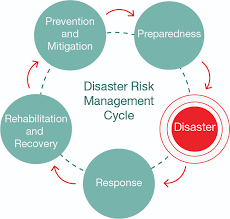Important Facts For Prelims
Subhash Chandra Bose Awards for Disaster Management
- 25 Jan 2022
- 3 min read
Why in News
The Gujarat Institute of Disaster Management (GIDM) and Professor Vinod Sharma, the founder co-ordinator of the National Centre of Disaster Management, have been selected for the Subhash Chandra Bose Aapda Prabandhan Puraskar for 2022 for their excellent work in disaster management.
- The GIDM was established in 2012 and since then it has been working to enhance the Disaster Risk Reduction (DRR) capacity of Gujarat.
- Professor Vinod Sharma has worked tirelessly towards bringing DRR to the forefront of the national agenda.
Key Points
- About the Awards:
- The central government has instituted the annual award —Subhash Chandra Bose Aapda Prabandhan Puraskar—to recognise and honour the invaluable contribution and selfless service rendered by individuals and organisations in India in the field of disaster management.
- The award is announced every year on 23rd January, the birth anniversary of freedom fighter Netaji Subhash Chandra Bose.
- It carries a cash prize of Rs. 51 lakh and a certificate in the case of an institution and Rs. 5 lakh and a certificate in the case of an individual.
- Disaster Risk Management:
- Disaster Risk Management implies the systematic process of using administrative decisions, organisation, operational skills, and capacities to implement policies, strategies and coping capacities of the society and communities to lessen the impact of natural hazards and related environmental and technological disasters.
- These comprise all forms of activities including structural and non- structural measures to avoid (prevention) or to limit (mitigation and preparedness) adverse effects of hazards.
- There are three key stages of activities in disaster management:
- Before a disaster: To reduce the potential for human, material, or environmental losses caused by hazards and to ensure that these losses are minimised when disaster strikes;
- During a disaster: To ensure that the needs and provisions of victims are met to alleviate and minimise suffering; and
- After a disaster: To achieve rapid and durable recovery which does not reproduce the original vulnerable conditions.
- The Sendai Framework for Disaster Risk Reduction 2015-2030 was adopted at the Third UN World Conference in Sendai, Japan, in 2015.
- The Sendai Framework is the successor instrument to the Hyogo Framework for Action (HFA) 2005-2015: Building the Resilience of Nations and Communities to Disasters.
- The different phases of disaster management are represented in the disaster cycle diagram.







